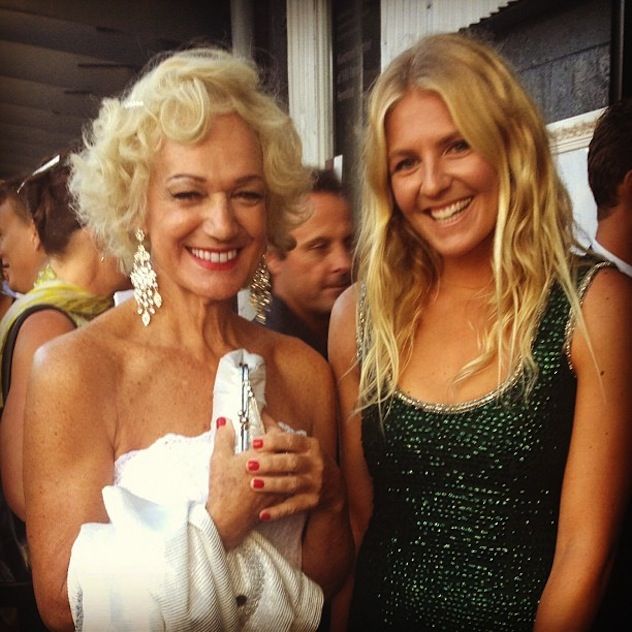_copy_600_900_80.jpg)
For a long while I was trying to convince myself that winning is overrated, but since being inducted into the Hall of Fame, I realize I had it all wrong.
Let me explain. On February 20th I attended the 2013 Australian Surfing Awards in Sydney. A black-tie gala celebrating Surfing Australia’s 50th anniversary, it felt like The Oscars, with Nat Young and Sally Fitzgibbons doubling for Jack Nicholson and Jennifer Lawrence, and Australia’s 10 Most Influential Surfers and a Hall of Fame inductee replacing Best Picture and Lifetime Achievement Award. I was there with my team to shadow Westerly Windina, formerly Peter Drouyn, the subject of our documentary film-in-progress. This was Westerly’s first big appearance since her “completion” (gender reassignment surgery) in December. Clad in platinum blonde wig, lacy white dress, and ruby red lipstick, she was Marilyn Monroe reincarnate.
The night was a frolicking success. Greeting the crowd via video feed, Prime Minister Julia Gillard spoke about Australia being synonymous with surfing, offered her congratulations, and wished us a great evening. Mark Richards was voted #1 Most Influential Surfer, and gave an excellent speech about how perfect waves and world titles become less important later in life, while friends and family take on richer meaning. A glowing, sun- and saltwater-kissed Stephanie Gilmore was rightfully inducted into the Hall of Fame. Peter/Westerly failed to make the 10 Most Influential Surfers, but not to worry. She was the star of the evening. World champs lined up to get their pictures taken with her.

But what I want to tell you about happened much earlier in the night. As arriving surfers stepped out of cabs and glided across the red carpet to a constellation of flashbulbs, my co-director Alan White and I tooled around the cocktail reception. It was there that we found the Hall of Fame trophy, inscribed with all 34 inductees’ names.
“Shall we get a photo?” asked a photographer.
The trophy was set in front of a picture of a barreling wave, creating a sort of photo booth. “Why not,” we told him, and posed like champions.
The following morning the photographer sent me a jpeg of the shot and I immediately posted it on my Facebook page, adding, “Finally made it, ma.” I was just messing around, or so I told myself (my therapist might argue otherwise).
In it came: “right on Jamie, congrats bro.” “congrats brisick.” “WOOOHOOOOOO!!!! CONGRATS JAMIE!!! WELL DESERVED!!” “fooken a jamie !!!!” “FELICIDADES JAMIE” “must be quite an honor.your really leaving your mark with this one.the power of the pen.” As the day kicked on the felicitations kept coming. It felt like I was back at the gala, standing on stage, trophy in hand, as the roaring applause turns to standing ovation. It was a sort of placebo induction, and damn it felt good.
For a couple decades now I have had a troubled relationship with winning. Throughout the eighties and into the early nineties I was a competitive surfer—winning was all I dreamed about. When my middling pro career ended badly in 1992, I started writing for surf magazines. This was a great relief. No longer was my self-worth determined by my ASP ranking or how I did in the last contest. Sport was black and white; there were winners, and there were losers. Art—in my case writing— moved more mysteriously, it was beyond such binary judgment.
Case in point: Last summer, at a literary festival in Cornwall, England, I attended a symposium about the merits of failure. The writer Geoff Dyer told about the time he pitched a story to a magazine about skydiving, in which he would go through the requisite training, jump out of a plane, and write about it. The magazine assigned him the piece, and Dyer learned all he could about parachutes and ripcords and free-fall and terminal velocity and “ram-air” wings and swooping. But when it came time to jump, when he was up at however many thousand feet, parachute on, door open, wind whipping in his face, planet earth a tiny marble below, he chickened out. Of course, he wrote a story about all this, and the story was a hit, thus a failure turned into a success. That’s it! I thought. In sport you’ve got one shot. In art you get, as writer Paul Theroux put it, “a second chance that life denies us.”
But becoming a Hall of Famer has turned this all around. Pre-Hall of Fame I was in denial, I was merely rationalizing my failures. Post-Hall of Fame I have touched the sweet effervescence of victory, I have been reverted back to my win-at-all-costs self.
I’d like to thank my sponsors, Quiksilver, Rip Curl, and Channel Islands, for believing in me. I’d like to thank Willy Morris, Wes Laine, Todd Chesser, and Tom Carroll for being great friends and mirrors and mentors. I’d like to thank Julie from 11th grade, whose golden skin and giraffe-like legs reduced me to stutters, but also gave me something to strive for.
My path to this stage goes something like this: I was dreadfully insecure as a child, but desperately in need of attention. Surfing came, and I was good at it. I worshipped Larry Bertlemann, Mark Richards, Cheyne Horan. On lonely afternoons, often onshore and only knee-high, I imagined I was in the finals of the OP Pro, with thirty-seconds on the clock, and hundreds of thousands of fans cheering me on. Amid that sea of faces was Julie, whose blue-eyed gaze inspired me to push harder on my cutbacks, to fit in one last top turn.
I never won an OP Pro and I never spoke more than a few words to Julie. All of which is to say that unrequited love is a powerful driving force. As a famous singer once sang, ‘Out of sorrow entire worlds have been built/Out of longing great wonders have been willed.’
Have a great night.